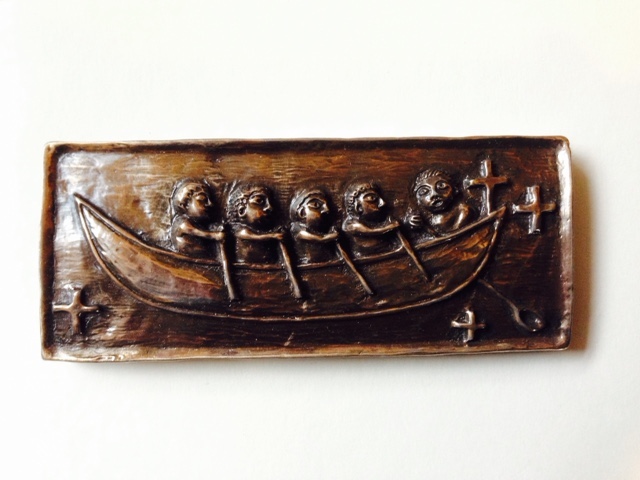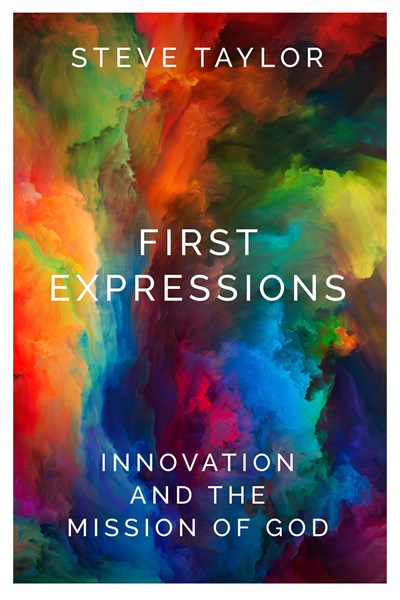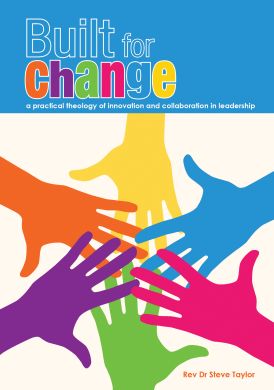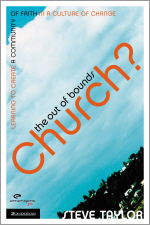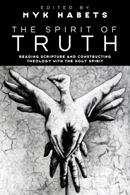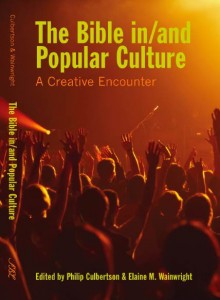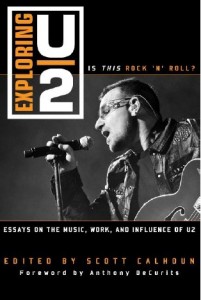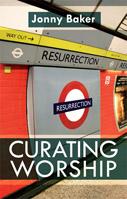Thursday, January 28, 2010
Religion in (Aussie) public spaces
While channel surfing last nite (looking for the tennis) I heard the announcement, that a “Father Bob” was the upcoming TV feature.
“Father Bob.” The name sounded potentially religious, and since my interests are in how church relates to society, I thought I’d pause the tennis and check out this “Father Bob.”
Sure enough, on came Father Bob. He was an elderly gentleman. Full of cheer. Who seemed to be linked to a church. Who had a news assignment that, of checking out the Big Day Out. Cruising around, checking out the merchandise, interviewing band members (Powderfinger) and Big Day Out concert attendees, asking what would it take for them to come to his church. Then back to the studio and Father Bob continues his dialogue with the panel.
My mouth is hitting the floor.
You’d never seen anything like this on New Zealand TV. Priests and ministers only appear in the public media in relation to scandals and moral issues. They’re on the back foot, under the pump. Yet here, on prime time Aussie TV, at a prime time slot (7 pm), is a priest. Being portrayed in a human, humane and humerous way, helping carry a news story.
Is this unique to Father Bob? Or does this actually suggest that Australia is less secularised than New Zealand? And that the church has a much higher acceptance in the public (Aussie) space?
Oh, and the answer to Father Bob’s question: “What would it take for them to come to his church?” (Man I hate that question and the way it reduces mission to church attendance and spirituality to come-to-us consumption)
Question: What would it take for them to come to his church?
Ans: Music. Get some bands in. Entertain the back row. Get your hands in the air.
Tuesday, December 22, 2009
public kiwi mission: carols by glowstick
Some churches use public peace labyrinths. Some use controversial billboards. Some use carols, done well – high quality musicians; high quality graphics; quality networking to gain sponsorship from Auckland City Council, Vector Arena, DDB Capital; preaching; carols; prayer; offering.
= 6,000 people in attendance. For a writeup, go here.
Thursday, December 17, 2009
Christmas blame: sex and the incarnation: updated
Last year, the leadup to Christmas found me in a rather bizarre bus stop conversation. The essence was a stranger telling me that Christmas was God’s fault, for not using a condom. At the time, I wondered how widespread was this rather crude notion of sexuality and the human/divine connection.
This year the conversation has returned. This time, starting not on the street, but from a church, with the following billboard going up in Auckland.
For St Matthews it is an:
ongoing effort to provoke conversation about spiritual matters … a Christmas billboard … that lampoons literalism and invites people to think again about what a miracle is. Is the Christmas miracle a male God sending forth his divine sperm, or is the miracle that God is and always has been among the poor?
Well yes, but only if you are trading on a crude notion of Incarnation as a God sleeping with a woman. It’s certainly not orthodox Christianity, in which the Creeds affirm Jesus as begotten, not made. Words designed to avoid the notion of Incarnation as literal male God sleeping with Mary. So I’m not sure what “literalism” St Matthew’s think they are lampooning. Perhaps the crude notion I encountered last year.
The Catholics are angered, claiming that “for a church to put up a poster which implied the Virgin Mary and Joseph had just had sex was disrespectful to the church.” Well there is no timeline on the poster, so it’s a silly comment. It also continues the vague disquiet that the church seems to have with sex.
I couldn’t help reflecting, as I looked at the billboard, on the fantastic annunciation art that through history the church has produced: Botticelli, Da Vinci, Caravaggio, Henry Tanner. In the 21st century is the best we can do a billboard commenting on male sexual anxiety?
It makes me glad of the Christmas journey here at Latimer Square, offering peace amid the stress, open-ended meaningful amid the tinsel.
Updated: In the last 24 hours, the billboard had paint splashed on it, and then overnight was stolen. The spokesman for St Matthews is disappointed, surprised that some people can preach love, but not act in love. Which of course demands a mirror be raised: if for St Matthews, the standard is love, how does that stack up with there self-professed motive: to “lampoon literalism” (Dictionary definition “harsh satire usually directed against an individual”). I don’t condone theft. And two wrongs don’t make a right. But me thinks it’s a bit rich for St Matthews to claim the high moral ground that is love on this one.
Thursday, December 03, 2009
Double Rainbow: a missiology for the least of these
I’ve been really enjoying The Double Rainbow: James K Baxter, Ngati Hau and the Jerusalem Commune by John Newton. It’s beautifully written, an important study of what is quite a unique form of emerging church, commune’s in the 1970s.
Here’s part of the introduction.
“When Maori and pakeha do these things together, the double rainbow begins to shine.” The double rainbow is Baxter’s symbol for a mutually regenerative bicultural relationship … Pakeka culture’s material dominance was accompanied by an arrogance and ethnocentrism which left it spiritually impoverished. “The Maori is indeed the elder brother and the Pakeha the younger brother. But the [younger brother] has refused to learn from the [elder brother]. He has sat sullenly among his machines and account books, and wondered why his soul was full of bitter dust.”
The book explores Baxter’s forming of the community at Jerusalem. It describes the impact of Parihaka on Baxter and how it turned him toward Maori culture. So much of Baxter’s arrival at Jerusalem has echos of Luke 10:1-12, of Baxter arriving barefoot and throwing himself on the hospitality of the local Maori.
The book moves beyond Baxter’s death, describing the emphasis on the least of the these, nga mokai, the fatherless and nga raukore, the trees who have had their leaves stripped, and the place of relationships and love in the healing of broken people and mental illness. It is a totally unique story: a Pakeha community built on Maori terms.
A lot of my creativity and reading in the last month has been around Kiwi mission themes (Parihaka, local peace stories). I’ve found it energised and humbling. And perplexing. Why, when I’m moving to Australia, am I so challenged? Isn’t it a waste? Shouldn’t I be staying, continuing to thrive in this Kiwi soil? I have no answers, simply wanting to name my confusion.
Thursday, November 19, 2009
kiwi creativity: mike riddell blogs the cinematic journey
I’ve been enjoying recently Mike Riddell’s blog: Interminable moon. It is a neat title, a play on words, the story of his journey to turn his fictional book: The Insatiable Moon, into a film. It’s been a 7 year journey, hence the apt title “interminable.”
At first the blog was simply a narrative of bureaucratic pain, the (losing) battle to secure funding. Mike, never known for taking no for an answer, simply decided to shoot the film himself. Now the blog is much more interesting, the daily journal of the filming in and around the streets of Ponsonby. Mike might have moved from text to screen, but he’s still a great writer and the blog is a delight, as well as a window into the sheer hard slog that is the creative process. I need that reminder: that creativity is 90% perspiration around 10% inspiration, a mix of skill and instinct, management and creativity.
Mike supervised my Masters, at Carey Baptist College, and my PhD, at University of Auckland. Both were the last tasks he would do at either place.
(In fact, every one of my post-graduate supervisors – Mike Riddell, Brian Smith, Gregory McCormick and John Drane – would leave the academy just as I finished my Masters/PhD’s. In my better moments, I’m sure this is coincidence, because it’s not all about me! Is it?)
So Mike calls me into his office at Carey College to tell me that I had better make my planned Masters thesis completion date, because the publication of the Insatiable Moon is the trigger which will see him leave Carey, leave Auckland, and move to Dunedin. Jump? Or push? Or a confluence of circumstances, including family and Rose’s career? Depends who you ask.
Which makes it interesting to then read the following Amazon review:
What makes this whole book more amazing (apart from a really, really good sex scene, covering six full pages) is that, skating right on the very edge of outright blasphemy, it was written by a Baptist Minister – and it hasn’t been decried by the Christian community. It’s accessible to believers and non- believers alike, and explores issues of faith, rather than poking fun at the concept.
Can Christians let people poke fun at them? (Tempted to include a sentence about insatiable “mooning” at Christians) Can we have art that gets us thinking? Where do artists best function in relation to the Christian community – inside or outside?
You, my reader, can ponder the heady questions. Today, I simply pen the following blessing:
May the moon rise above you Mike Riddell
and may the warm winds of Ponsonby blow upon your creative dreams,
May the cinematic gatekeepers rise and call your movie blessed
And the cash registers ring to re-fill your creative investments
Tuesday, November 10, 2009
what European colonisers had done
“[I] should have instead referred to what European colonisers had done.”
So said Hone Harawira today. As Hone was speaking, I was reading Buddy Mikaere, Te Maihora and the promised land, (Reed 1998). Here’s some statistics from the book, which throw some light on “European colonisers” in the South Island.
– In the 1840’s, Maori sold to the European all the land from Kaiapoi to Otago, 8 million hectares, stretching from one coast of New Zealand to the other.
– They were paid 2000 pounds. For 8 million hectares!
– In exchange, they were promised “large” reserves. However the size of these reserves was not undefined. It ended up being 2.5 hectares per Maori, about 3,500 hectares. That’s quite a reduction when you used to have 8 million!
– The deal also promised schools and hospitals. Those never really materialised.
– When they complained to Parliament, the so-called highest law courts, they realised that was by vote, and Pakeha outvoted Maori!
I wonder how I would feel if that happened to my ancestors?
I’ve already blogged a bit about the apology. But I end up admiring a guy who can say this publicly:
Mr Harawira said his wife saw the email shortly after it was sent and told him that he should not have sent it. “What I should have done is ask her to look at it first before I sent it,” he said. Asked if she was angry, Mr Harawira said: “love conquers all”. Here
making news: a lived Christian faith
Monday nite news. TV 3. A quirky story about a man who finds $20,000 in a lamp up for auction.
And then in the final 5 seconds comes the question: what set of rules shape that sort of behaviour? And the camera pans to the mans T-shirt. WWJD. Check it out.
Great example of a lived Christian faith!
Monday, November 09, 2009
stars from our Grow in Parikaha peace service
Great night at Grow last night. The theme was Grow through local peace stories and we kicked off with the Parihaka story. (Tuahawi and Taroro coming up in future weeks!). Mark Grace was a star, speaking really well, weaving his story, the Bible story and the Parihaka story together.
Those gathered were all stars, with some excellent table sheet interaction. God was a star, with stories that affirmed God’s Spirit alive and well at Parihaka.
And the playing of this fantastic video was also a star. They need to produce a youtube clip for the Parihaka Peace Festival 2010, with Tiki Taane or Dallas Tamaira (Fat Freddy’s) trumping that little Irish-man (Bono the Vox).
Saturday, November 07, 2009
Growing in unpeace stories: an updated response to Hone Harawira
Updated: Hone has apologised. This includes in relation to my point 1, in which he adds a very helpful nuance, specifically that of “colonisers.”
“He should have instead referred to what European colonisers had done … He accepted his language had damaged Maori-Pakeha relations and he apologised for demeaning women. The controversy had damaged his credibility and he would be doing “serious bridge building” with his caucus.”
And he commits himself to bridge-building. I honour that sentiment in him. Now will Pakeha, and the media, give him the space to move and grow?
Public disclaimer: I have been very tempted to vote for the Maori Party at the last two elections. I felt that the Foreshore and Seabed legislation was an injustice, a misuse of political power and a disgrace to New Zealand’s commitment to the Treaty and that we needed a Maori voice in Parliament, not hobbled within a larger party.
So it’s interesting to hear the following Maori party opinion on my voice, culture and ethics.
“Gee Buddy, do you believe that white man bullshit, too, do you? White motherf***ers have been raping our lands and ripping us off for centuries and all of a sudden you want me to play along with their puritanical bullshit.”
So wrote Maori political party member Hone Harawira recently.
Well yes, at Parihaka (which we remembered on this blog only a few days ago) white men did. It was a sad and shameful day that I wish it had not happened.
But Hone do you really think that the best way to move the discussion forward is to
1 – Lump me and my white friends today in with that story? You run the risk of connecting me to history solely by skin colour. And that’s racism isn’t it?
(When I seek to grow people in peace through mediation techniques, I suggest a groundrule, that we stick to the issue, that we play the ball, not the person. That includes racist cultural comments)
2 – Assert that a historic wrong by one culture gives another a culture a right to different codes of behaviour? If you don’t like the codes (in this case being sent to work in Europe on political business and using a day to be a tourist in Paris), by all means protest the codes. But do that before you go. Not after you’ve been caught.
(When I seek to grow people in peace through mediation techniques, I suggest a groundrule, that we deal with issues one at a time. If you have concerns with history, we seek to listen to each other around history. If you have a concern with puritanical ethics we seek to listen to each other around ethics. If you have a concern with how the relate together, we seek to listen to each other around all three. But jumping from issue to issue is rarely helpful.)
3 – Hone, the city of Paris was built partially on French colonial pillage. So it seems quite rich for you to enjoy the Parisian pillage, and then protest the pillage upon return?
(When I seek to grow people in peace through mediation techniques, I suggest there are times to apologise, not just with words, but by outlining ways that the person will act in the future to ensure the behaviour is not repeated. What could look like in this situation Hone, so that you and I can move on, so that we are not forever referring back to this moment in history, so that I can have confidence to vote for your party in the next election?)
Wednesday, November 04, 2009
Parihaka day: Growing in local peace stories
We need to be blessed by peace stories and peacemakers. Desperately. Even more, we need to be blessed by local peace stories and local peacemakers. Hearing allows us to grow in peace. So join us
Sunday, 8 November, 7-8:20 pm, Opawa Baptist Church foyer, part of our Grow service.
Mark Grace, Tertiary Students Christian Fellowship will share some of his life story. It includes growing up Pakeha, becoming a Christian and as an adult starting to discover his Maori roots. Including a local Kiwi peace story, the events at Parihaka between Maori and Pakeha. A local peace story over 100 years old, that has grown, blessed and challenged his understanding of Christian faith.
Updated: For more on Parihaka here’s something I wrote for radio a few years ago (more…)
Saturday, October 31, 2009
WWLD? What would Luther bang on Tamaki’s door? updated
Today is Reformation day. On October 31, in 1517, Luther nailed his 95 theses on to the door of Castle Church.
1. When Jesus said “repent” he meant that believers should live a whole life repenting
2. Only God can give salvation – not a priest.
3. Inwards penitence must be accompanied with a suitable change in lifestyle.
4. Sin will always remain until we enter Heaven
… and so on: 95 soundbites of opinionated faith, nailed on the door of Castle Church. Why Castle Church? It was the site of Europe’s largest collection of church artifacts, and for some years, had been charging people to view the relics, making money out of religious desire.
So today, some 492 years later, I wonder what Luther would nail on the door of the church today?
Well, before I pick out the splinter from the eye of another, let me look at the log which is my own door. I wonder what he would nail on Opawa’s door?
Perhaps
1. Perfect love casts out fear?
2. Seek a new senior pastor based on the needs of the whole church, not your own concerns?
3. Keep the focus on people projects not building projects?
4. Remember you still have not found what you are looking for (Philipians 1:6)?
Updated: Ok, here is what I eventually “banged on the Opawa door”/ ie preached on Sunday morning.
For reforming Opawa as a church in transition today
- Choose a new pastor based on the needs of the whole church, not your own individual desires.
For reforming the church in general
- Recent arrivals to the church are as important as longer term inhabitants. And just as important are people who are not yet with you.
- Non-Christians, new Christians, long term Christians. All of you are sinners. So walk gently and generously with each other.
- Being encouraging and expressing thanks is normal Christian behaviour.
For reforming us as individuals
- Non-Christians, new Christians, long term Christians. All of you are loved by God. So accept that love as righteousness. Grow out of love, not fear.
- Live out of your unique fingerprint. So you can’t be the same Christian as the person beside you.
So, with tears in my own eyes, I now wonder what Luther might nail on Brian Tamaki’s church door?
1. You can’t charge people to buy your relics, your T-shirts and DVD’s?
2. You need to encourage people to think about the Bible for themselves?
3. You need to be more co-operative toward media organisations like TV 3?
4. Yes you need first-fruits offering, but to be Biblical, uou need to give the first fruits offering, (see James Hardings comments here) to the priests who have no income producing land of their own. So that’s not you Brian, because you have your own income-producing land, your own gym and house.
5. ?
Wednesday, September 09, 2009
is God holding a white-y Bible? (introduction, chapter one)
Decolonizing God: The Bible in the Tides of Empire is a fascinating read by Australian, Mark Brett. He’s a lecturer in Old Testament at Whitley College and has been a researcher in Aboriginal land claims. It gives him a unique perspective from which to consider the question of whether God is a white-y, and whether God’s book really is an instrument that increases the power of white-y/Western cultures. In this chapter by chapter review, I plan to summarise the book and offer some down-under reflections, specifically from where I sit in New Zealand. It’s an urgent discussion for those of us who live in a post- world, and have to face the abuse of the Bible, it’s complicity in slavery and colonisation and whether we can have any confidence in our ability to use it better than those who have gone before us.
In the Introduction Mark lays out his aims. He acknowledges the crucial role of the Australian context in shaping his work and the fact that he Bible has been used, historically, to legitimate colonization. He outlines his method, in which he refuses to adopt one particular hermeneutic. Instead he uses a range of questions and methods to ask the question: Can God be decolonised, freed from this past? What might it look like for Christianity to not only say sorry, but to find ways to live that are freed from historical injustices and power imbalances?
Chapter one The Bible and Colonisation explores how the Bible was implicated in colonisation and the key texts that might help a ‘post-colonial’ re-reading of the Bible. Brett notes the uniqueness of Australia (unlike New Zealand, South Africa or North America) it was settled with a mindset that which considered Australia “waste and unoccupied.” Social evolution was a huge driving factor in European colonisation, applying Darwin’s theory of evolution to suggest that white people were superior.
“[William] Ward’s prediction was based on the assumed superiority of European literature in general, of which he took the Bible to be a part – even though not a single line of it was first composed in the colonizing nations of Europe.” (Brett, 22).
Brett notes a variety of responses: from evangelical Anglicans like William Wilberforce advocating for indigenous peoples (influencing the thinking of the British Government in relation to the Treaty of Waitangi), through to the published opinions of Australian missionary clergy that Aborigines were “brutes” and “beasts.”
Genesis 1:28 was interpreted (for example by John Locke) to suggest an original empty creation. Land could be owned by no-one until the advent of agrarian labour (ie colonisation).
However, missionaries could not control the reception of the Scriptures once they were translated. “[B]iblical faith presented a form of sovereignity higher than government and it thus provided a foothold for Indigenous resistance.” (Brett, 26). Hence Gandhi drew on the Sermon on the Mount to shape his resistance to British rule, as did the Gikuyu tribe in Kenya in the 1920’s. In New Zealand, Te Kooti drew on the Bible in founding the Ringatu faith. Aboriginal leader David Burrumarra urged holding together both traditional and Christian life.
Despite this subversion, “the overall effect of most of the missions was cultural genocide.” (Brett, 29, quoting George Tinker, an Osage/Cherokee theologian). Ironically, “most biblical texts were produced by authors who were themselves subject to the shifting tides of ancient empires,” (Brett, 31) and this is the focus of Chapter Two.
For discussion: Does it worry you that the Bible might have been used to endorse colonisation? What does such knowledge do to your respect for, and reading of, the Bible?
For all the posts relating to this book/blog review go here
Tuesday, May 26, 2009
peeping Bobbies: Is is Biblical to peer into a city of refuge?
Interesting clash between church and state in this newspaper article: “A Catholic priest has condemned Christchurch police as “tactless” after they staked out a funeral and allegedly stopped a car-load of mourners at gunpoint in an effort to find the dead man’s fugitive son. Several police were at the funeral of Linwood’s Tala Seleni, who was found dead in an apparent murder-suicide this month. At the time Seleni’s son, Tasi, 29, was on the run from police who wanted him on charges of kidnapping and stabbing. He did not attend the service after he got wind of the police presence. Pauline Seleni, Tasi’s mother and Tala’s separated wife, said police had violated the “sanctuary” of the church and prevented her son from making his farewell to his father.”
Where does the idea of a church being a sanctuary come from?
Firstly, probably the sense of a funeral being significant. Good ritual is about making a space, in which emotions can be channeled and expressed. Police presence is piercing that space, constantly reminding participants of the outside realities. Surely the Police could have gone as plain clothes, made an arrest quietly afterward if the person was present?
Second, the notion of a place – the church – being sacred. In Deuteronomy 19 we find cities of refuge. Israel is to build cities and clear roads, to which people flee when acts of violence are committed. Presumably this is tied to a safe legal process, in which the state mediates between offender and victim’s family, testing for accident and assessing innocence. And so this idea emerges, of specific places of sanctuary, in which people can flee.
I love Walter Bruegemann’s insights on this text, in which he points to this as a way in which church reforms society, acting within existing structures (local government, judicial), in order to enact God’s justice.
Which is lofty in concept and wonderful in vision. But can lose itself in the practicalities of life. And lacks clarity on when, where and how the State should be involved. Curiously, despite the detail of much of the Mosaic Law, there is no mention of this particular case-study, of whether the authorities can stake out these places of sanctuary, hoping to catch a son on the run!
Put it another way. Say a person accidently kills their son and flees to a city of refuge. The body needs to be buried (and quickly, in a Middle Eastern climate). Is the person guaranteed immunity so that they can leave the city of refuge to attend the funeral safely?
Our modern democracies are a long way from the theocracy of ancient Israel. So it is fascinating to see this notion of “sanctuary” still at work in our culture, and a grieving family and comforting Priest accusing the Police of peeping, of abusing “sanctuary.”
Tuesday, May 12, 2009
cartooning history: some thoughts on Margaret Mahy’s Awesome Aotearoa
I leafed through Margaret Mahy’s new children’s history of New Zealand last night. Given that she was banned from Christian radio, that I’m currently doing research on the cartoon genre and also lecture a course on Being Kiwi, being Christian, I was interested. Here are some random thoughts
– I liked the concept – New Zealand history for kids.
– I liked the way that space was given to tell of the Maori and French beginnings.
– I thought the missionaries got off lightly, noted for their role in Maori language learning, nor directly tagged with the supply of muskets to Maori.
– I was surprised in a book put out by a commercial press, to find grammatical errors, for example full stop instead of comma on page 18.
– I am not convinced of the mixing of cartoons and history. Cartoons often work by highlighting a particularity. What does this distortion do in a book titled “history”? So for example, the cartoon on page 39 referenced Samuel Marsden as the flogging parson. He was, but given that he exercised most of his ministry in Sydney, is this particular detail worth half of one page of a 125 page book about New Zealand history?
– And if it’s a book titled “history,” do things have to be true? So the cartoon on page 44, referencing the Treaty of Waitangi, has an army officer saying “Just how small can you make the small print Williams?” It’s sort of funny, but in a kids book, will kids get the joke? Or are they meant to laugh at all the cartoons, and so the cartoons are simply eye-candy, and not “history.” If so, that seems to me to be a trivialising of the genre of cartoons.
